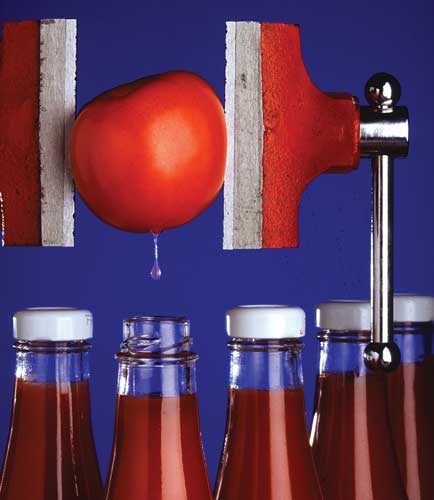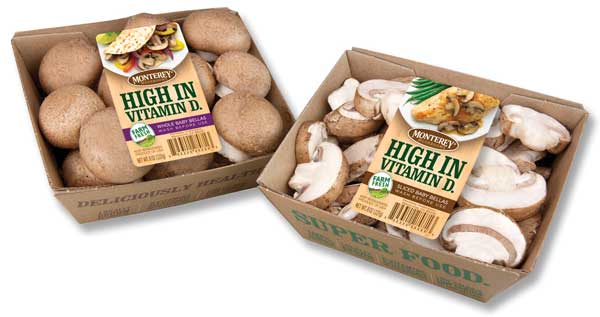Is Healthy Processed Food an Oxymoron?
PROCESSING
Food processing is often mistakenly associated with harming the healthfulness of foods. This prevailing viewpoint will be debunked in this month’s Processing column. The column will present examples of how food processing, in reality, improves the healthfulness of a wide variety of foods. Like all technologies, food processing offers the opportunity to benefit or to harm. Its ultimate impact depends on how it is implemented.
Market Size, History, and Definitions
According to Research and Markets, the global packaged foods market will be valued at $3 trillion by 2020. It is growing at a compound annual growth rate of 4.5%. The U.S. packaged foods market was valued at $378 billion in 2018. Within these massive markets lie the majority of processed foods.
Food processing began in prehistoric times. Until recently, the majority of food processing was performed at home. It is only within the past 100 years or so that food processing became industrialized. According to a consumer study by the International Food Information Council, 43% of Americans are concerned about some aspects of processed foods, including nutrition.
So what exactly is a processed food? According to the U.S. Dept. of Agriculture and other government organizations, processed foods include any food that has been altered from the state in which it was harvested or raised. Using this definition, everything from washed arugula to frozen peaches to packaged cookies and potato chips is considered processed food. The Institute of Food Technologists defined processing as “one or more of a range of operations, including washing, grinding, mixing, cooling, storing, heating, freezing, filtering, fermenting, extracting, centrifuging, extruding, frying, drying, concentrating, pressurizing, irradiating, microwaving, and packaging” (Weaver et al. 2014). According to these two definitions, the majority of the foods that we consume are processed.
Recent efforts have been made by different groups to further categorize processed foods based on their levels of processing and then relate these categories to the healthfulness of the processed foods within each category. The International Food Information Council developed a system containing five categories: minimally processed foods that require processing or production; foods processed to help preserve and enhance nutrients and freshness of foods at their peak; foods that combine ingredients such as sweeteners, spices, oils, flavors, colors, and preservatives to improve safety and/or add visual appeal; ready-to-eat foods needing minimal or no preparation; and foods packaged to stay fresh and save time. An alternate system called NOVA uses the following three categories: unprocessed/minimally processed foods, processed culinary ingredients, and all processed or ultra-processed products. The NOVA system has been recognized as a valid tool by the Food and Agriculture Organization and has been used to characterize all foods in the processed and ultra-processed food categories as unhealthy, despite the fact that the degree of processing does not always correlate with the nutrient content and/or the nutritional value of foods.
Current Drivers for Healthy Food Processing
Two important, yet opposing, drivers are pushing for improvements in the healthfulness of our food supply. The first is food insecurity, and the second is food overconsumption. One-sixth of human beings in the world are undernourished or malnourished. Despite that high number, the prevalence of diseases related to overnutrition has surpassed the number related to undernutrition. At the same time, obesity rates are climbing. Food processing will play an important role in meeting these critical global challenges.
Health Contributions
Enrichment and fortification have played important roles to both insuring adequate nutrient intake levels and improving health in America. Enrichment is defined as replacing nutrients lost in processing, and fortification is adding nutrients at higher amounts than they naturally occur in foods. Examples of enriched foods include grain products such as breads. Examples of fortified products include milk and salt. Iodine fortification of salt was critical in reducing the incidence of brain damage, goiter, and cretinism. Similarly, fortification of foods with folate is responsible for lessened levels of neural tube defects and severe congenital malformations in developing fetuses. Vitamin D–fortified foods like milk and cheese provide a good source of vitamin D in the diet. Although it is true that not all fortified foods improve health, these fortified foods do.
Manufacturing Technologies
What follows are select examples of food processing technologies that improve the healthfulness of different processed foods. These technologies produce healthy processed foods—foods with nutritional values greater than or equal to their unprocessed counterparts.
• Milling. Milling improves the nutritional content of cereals such as wheat by grinding not only the grain but the husks, which contain most of the dietary fiber, B vitamins, phytonutrients, and minerals.
• Canning and Freezing. A recent article in Journal of Food Science highlights the nutritional benefits of processing on apricots (Adkinson et al. 2018). Effects of commercial canning and freezing on the nutritional content of fresh apricots were studied. Results showed that canned apricots had a 17% increase in beta-carotene and a 48% increase in phenols over fresh apricots. Vitamin C was reduced by 17%. After 3 months of storage, antioxidant levels in canned apricots were 47% higher than fresh apricots. After freezing, apricots exhibited a 529% increase in antioxidants, 35% increase in beta-carotene, and 406% increase in phenols compared to fresh apricots. Previous studies have shown that fresh broccoli, cauliflower, corn, green beans, spinach, blueberries, and strawberries do not have significantly higher levels of nutrients than their frozen counterparts.
 • Tomato Processing. Lycopene from tomato paste has been shown in numerous clinical nutrition studies to be better absorbed by the body than lycopene from fresh tomatoes. Thus processed tomato products, such as tomato paste, tomato sauce, and ketchup, are a better source of this antioxidant than fresh tomatoes. Lycopene from tomato paste was shown to be 2.5 times more bioavailable in humans than lycopene from fresh tomatoes. Lycopene is an antioxidant that is important in prevention of some cancers.
• Tomato Processing. Lycopene from tomato paste has been shown in numerous clinical nutrition studies to be better absorbed by the body than lycopene from fresh tomatoes. Thus processed tomato products, such as tomato paste, tomato sauce, and ketchup, are a better source of this antioxidant than fresh tomatoes. Lycopene from tomato paste was shown to be 2.5 times more bioavailable in humans than lycopene from fresh tomatoes. Lycopene is an antioxidant that is important in prevention of some cancers.
• Freeze-Drying. Freeze-drying was the topic of the February 2018 Processing column. This technology is an extremely gentle drying process that preserves the nutritional quality of foods. Freeze-drying preserves the nutritional quality of foods so well that freeze-dried fruit and vegetable powders are commonly used to represent fresh fruit and vegetable controls in human nutrition studies.
• Ultraviolet Light Processing. Ultraviolet light (UV) processing was the topic of the Processing column in March 2015 and has also been used to improve the nutritional content of mushrooms and other specialty crops. Mushrooms exposed to UV light (UV-B or UV-C) produce vitamin D2. Mushrooms contain a compound called ergosterol that converts into vitamin D2 when exposed to UV light. This reaction occurs in all mushrooms, including white, brown, and portabello mushrooms. It occurs at slow rates when mushrooms are exposed to the sun, and the reaction time can be shortened drastically by exposing the mushrooms to high doses of intense UV light.
 Currently there are several large companies, including Monterey Mushrooms and Dole Food Co., that process and sell mushrooms that are high in vitamin D. Commercial mushrooms that provide 100% of the Recommended Dietary Allowance of vitamin D in a serving of mushrooms can now be found in stores around the country. UV-B light can also be used effectively as a postharvest treatment to enhance the antioxidant content of carrots and fresh-cut carrot products.
Currently there are several large companies, including Monterey Mushrooms and Dole Food Co., that process and sell mushrooms that are high in vitamin D. Commercial mushrooms that provide 100% of the Recommended Dietary Allowance of vitamin D in a serving of mushrooms can now be found in stores around the country. UV-B light can also be used effectively as a postharvest treatment to enhance the antioxidant content of carrots and fresh-cut carrot products.
Another area of great opportunity where food processing could positively impact the healthfulness of foods is through the development of novel healthy food ingredients from waste materials. Food waste utilization can help address food insecurity issues. Novel Vitamin D supplements, manufactured from mushroom stalks, are one such product. These mushroom powders provide up to 40,000 International Units of vitamin D per gram and can be added to foods. Similarly, other waste materials, including wine pomaces and brewers’ spent grains, can be used to create nutritious food ingredients.
While this column has focused on examples of processed foods that contribute positively to good health, it is recognized that there are many processed foods that do not. A 2015 study showed that reducing consumption of processed and ultra-processed foods in the United Kingdom could result in a substantial (10%–13%) reduction in deaths from cardiovascular disease (Moreira et al. 2014).
A Look Ahead
This column strived to bring some mindfulness to the dualistic belief that all processed foods are unhealthy. This limited mindset results in conclusions that simply are not true. Food processing is not to blame for the poor health of our population. While high consumption levels of specific, unhealthy foods contribute to health issues, there are other factors involved as well. As food scientists we need to use our science to meet the challenges of our time. Although steady progress has been made in improving the healthfulness of foods through processing, more opportunities await discovery. This is an area of increased need for the future, one which new processing technologies can address. It is our responsibility to ensure the healthfulness of the food supply for future generations.
 Tara McHugh, PhD, Contributing Editor
Tara McHugh, PhD, Contributing Editor
Research Leader, USDA Agricultural Research Service, Albany, Calif.
[email protected]
References
Adkinson, E. C., W. B. Biasi, V. Bikoda et al. 2018. “Effect of Canning and Freezing on the Nutritional Content of Apricots.” J. Food Sci. 83(6): 1757–61
Moreira, P. V. L., L. G. Baraldi, J. C. Moubarac et al. 2014. “Comparing Different Policy Scenarios to Reduce the Consumption of Ultra-Processed Foods in UK: Impact on Cardiovascular Disease Mortality Using a Modelling Approach.” PLOS One. 9(3): e92752.
Weaver, C. M., J. Dwyer, V. L. Fulgoni III et al. 2014. “Processed Foods: Contributions to Nutrition.” Am. J. Clin. Nutr. 99: 1525–42.


